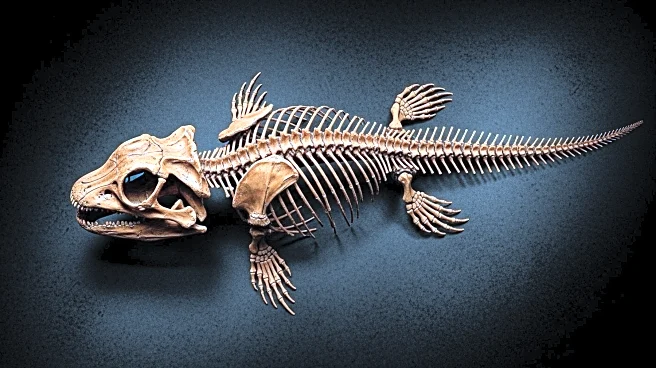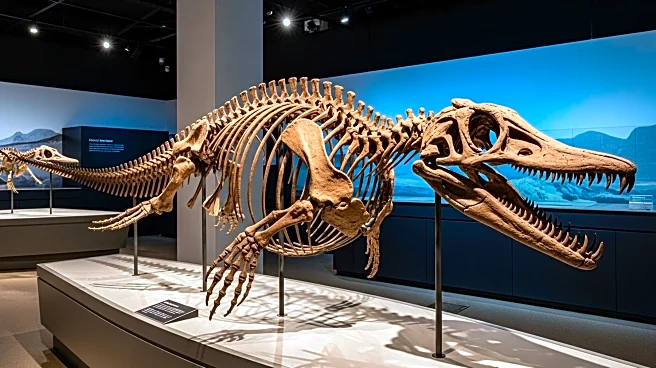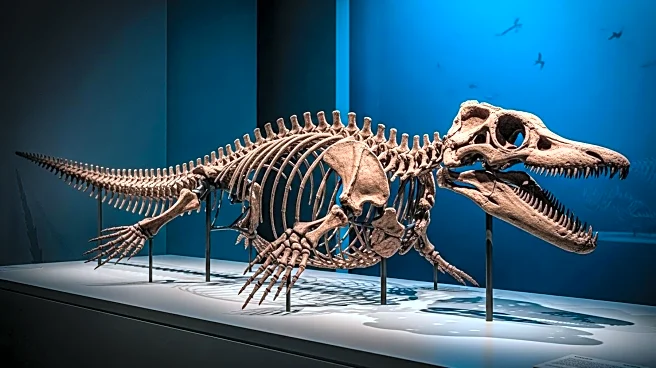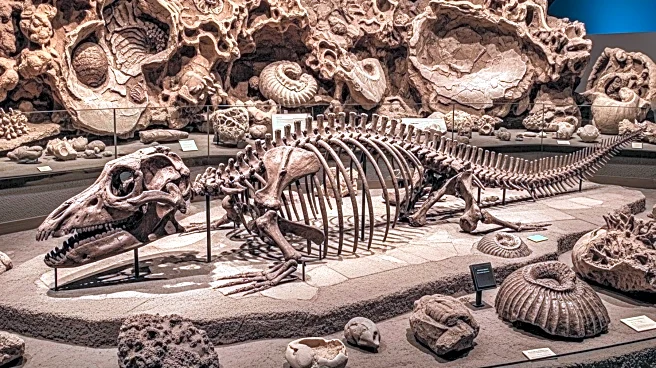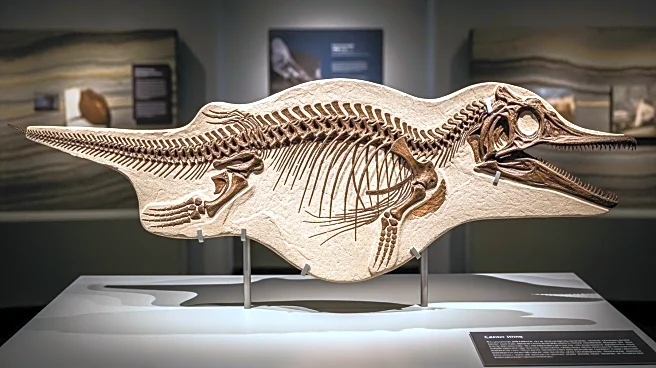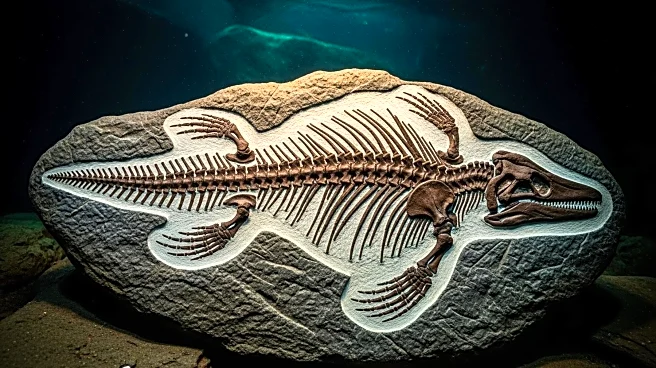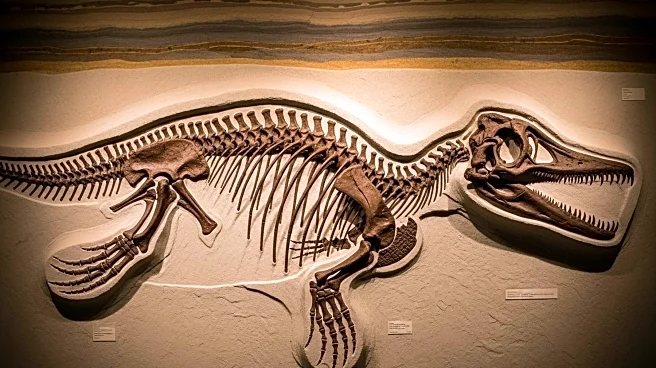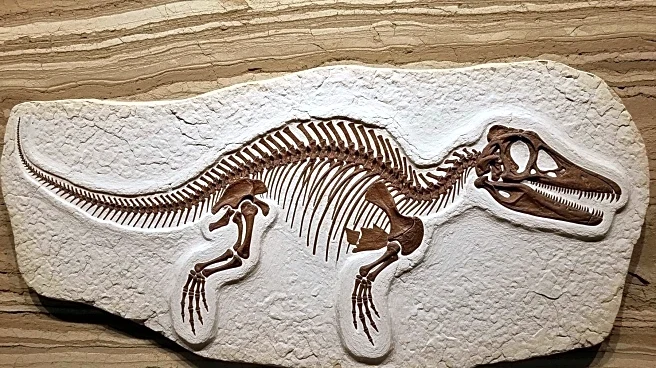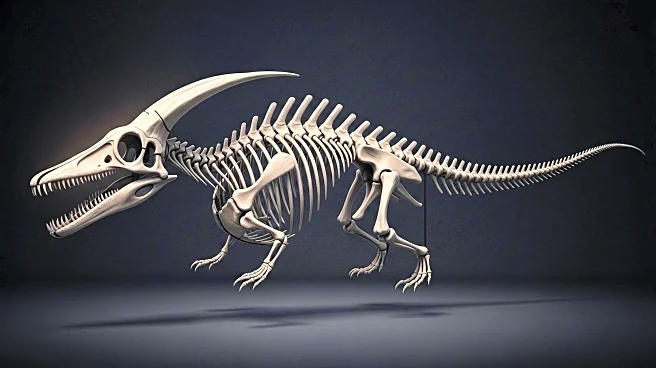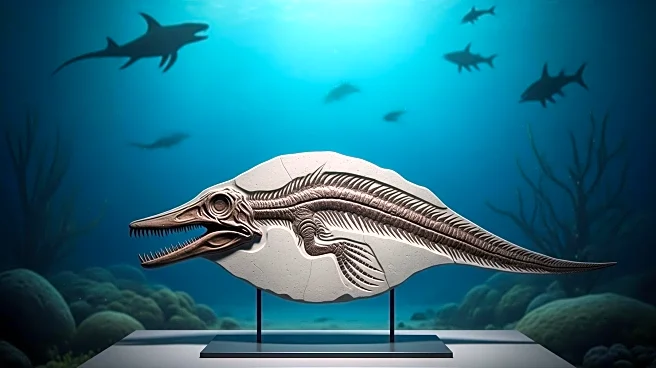What's Happening?
A new species of ancient marine reptile, named Xiphodracon goldencapsis, has been discovered in England. This ichthyosaur, which lived approximately 190 million years ago during the Early Jurassic era, was identified from fossils found in the Golden Cap of Charmouth, a region known for its rich fossil deposits. The discovery was made by professional fossil collector Chris Moore in 2001, but the specimen was only studied in detail in 2024. The fossil includes a skull with a large eye socket and a distinctive long, sword-like snout. Researchers noted unique features such as unusual bones around the nostrils and a round nasal opening, differentiating it from other ichthyosaurs of the period. The ichthyosaur's teeth suggest a diet of soft, small prey like squid-like animals, with stomach contents indicating fish and cephalopod consumption.
Why It's Important?
The discovery of Xiphodracon goldencapsis adds significant knowledge to the understanding of ichthyosaur diversity and evolution during the Early Jurassic period. Ichthyosaurs were widespread marine predators, and this new species provides insights into their adaptation and survival strategies during a time when many ichthyosaur families were facing extinction. The fossil's preservation and unique features offer valuable data for paleontologists studying marine reptile evolution. This discovery also highlights the importance of the Jurassic Coast as a site for paleontological research, contributing to the broader scientific understanding of prehistoric marine ecosystems.
What's Next?
Further research and analysis of the Xiphodracon goldencapsis specimen are expected to continue, potentially revealing more about its ecological role and evolutionary history. The findings may prompt additional exploration and excavation efforts in the Jurassic Coast region to uncover more specimens and expand the understanding of ichthyosaur diversity. Researchers may also compare this species with other ichthyosaur fossils found globally to better understand the evolutionary pathways and environmental factors influencing their development.
Beyond the Headlines
The discovery of Xiphodracon goldencapsis underscores the ongoing importance of fossil sites like the Jurassic Coast in contributing to scientific knowledge. It also raises questions about the preservation and study of fossils, as this specimen remained unexamined for years despite being displayed in a museum. The ethical considerations of fossil collection and the role of museums in facilitating research are highlighted by this case, emphasizing the need for collaboration between collectors, researchers, and institutions.

